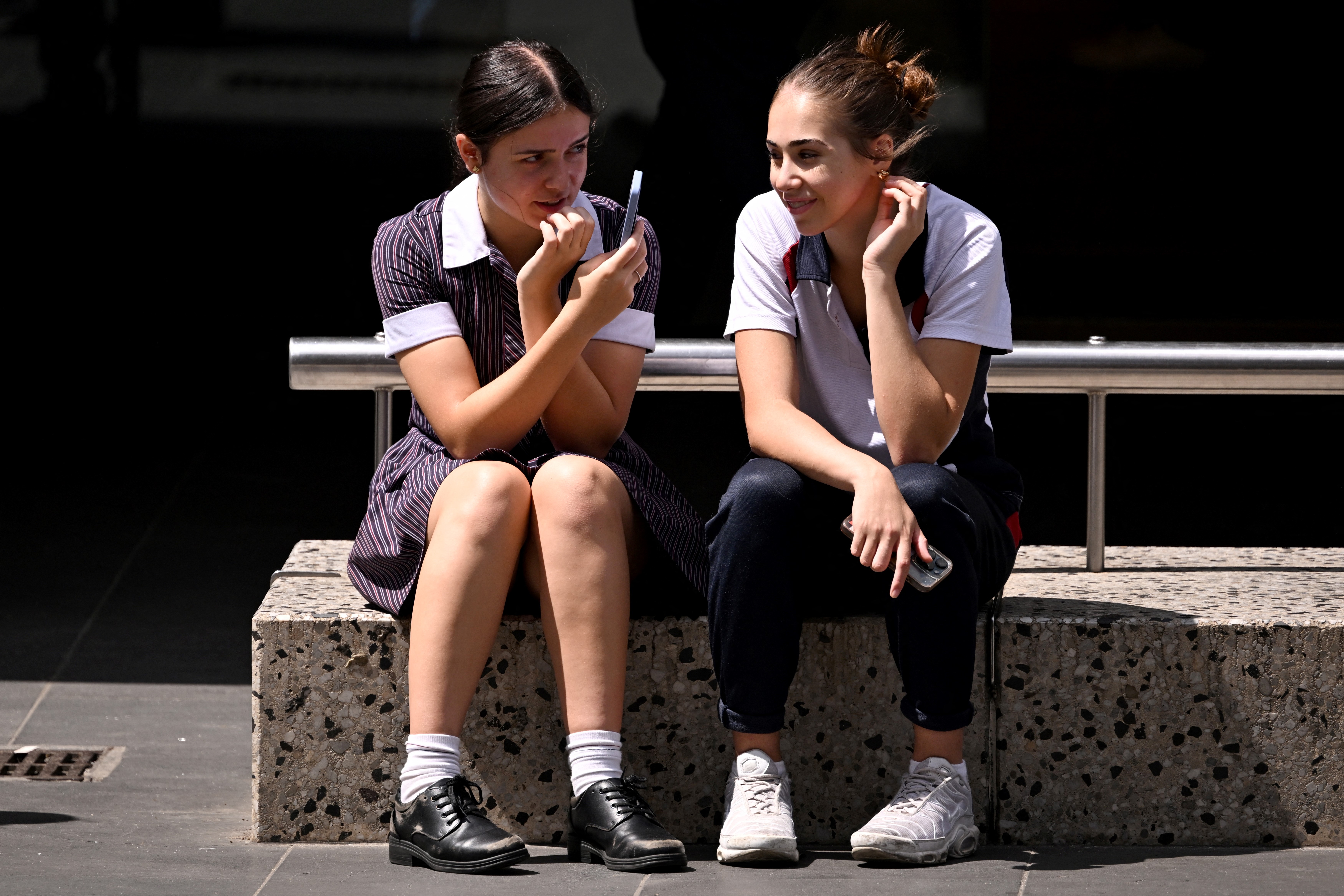Revelers decked out in traditional purple, green and gold came out to party on Fat Tuesday in New Orleans’ first full-dress Mardi Gras since 2020 after the coronavirus pandemic canceled last year's festivities.
The general feeling of a city bereft of its signature event last year was summed up by the gold glitter messages on Mike Robertshaw’s and Nora Ellerton’s green and purple capes. Hers read, “Welcome back, y’all.” His said, “We missed you.”
The fun included back-to-back parades across the city and marches through the French Quarter and beyond, with masks against COVID-19 required only in indoor public spaces.
Parade routes were shorter than usual, because there weren't enough police for the standard ones, even with officers working 12-hour shifts as they always do on Mardi Gras and during the end of the Carnival season.
But with COVID-19 hospitalizations and case numbers falling worldwide and 92% of the city's adults at least partly vaccinated, parades and other festivities were back on.
Costumed partiers gathered before dawn to see the North Side Skull & Bone Gang, dressed as skeletons, wake up the city's Treme neighborhood, reminding everyone of their mortality. From then on it was “Let the good times roll,” with celebrations in just about every corner of the city, leading up to a ceremonial clearing of Bourbon Street at midnight.
Get Tri-state area news delivered to your inbox. Sign up for NBC New York's News Headlines newsletter.
U.S. & World
Fewer revelers appeared to be wearing politically themed costumes than in past years. Most of those who did so supported Ukraine, which is battling a Russian invasion.
Jamie Dell’Apa and Bob Ray, both of New Orleans, wore hooded paper coveralls painted with the blue and yellow of Ukraine's flag and gloves of the same colors that were blown up like balloons and on which they had written, “Russian Covid 22.”
Ray said people had been walking up to the duo all day speaking Ukrainian. “That makes me cry,” he said.
Along Jackson Avenue in the city's Central City neighborhood, crowds watched the Zulu Social Aid and Pleasure Club's parade, which started decades ago as a mockery of white festivities, with Black float riders in blackface and grass skirts. People wore sequined jackets, kids played football and the sound of “Mardi Gras Mambo” boomed from speakers.
Nikia Dillard was putting on gold, purple and green false eyelashes and taking photos with the group of girlfriends and family she has gathered with at the same spot for years to watch Zulu. After spending last year celebrating at home and “in spirit," it was good to be back to something closer to normal, Dillard said.
“It’s a wonderful feeling. We have been cooped up, quarantined, trying to be responsible for so long, and we’re still being responsible," she said, noting that her group has been vaccinated, received their booster shots and has masks.
Mobile, Alabama, which calls itself the birthplace of Mardi Gras, also missed throwing a full-blown Carnival last year because of COVID-19, and some restaurant managers say they are still having a hard time filling jobs, leading to the odd sight of empty tables Tuesday while lines of people snaked out the door in some places.
The return of Carnival season has been a much-needed boon for business in New Orleans, where the famed restaurants and music venues were restricted or closed for months.
Tuesday’s crowd could set a Mardi Gras record for Superior Seafood & Oyster Bar, a 10-year-old restaurant located at the start of the truncated parade route.
“It feels like it. With the weather and the general sense of a somewhat normal New Orleans,” general manager John Michael Rowland said during the noon rush.
Hotel occupancy, though, was expected to be about 66%, down about 19.5% from 2020, said Kelly Schultz, spokesperson for New Orleans & Co., the official sales and marketing organization for New Orleans’ tourism industry.
Parades were canceled last year because officials realized tightly packed crowds in 2020 had created a superspreader event, making the city an early Southern hot spot for COVID-19. Instead, people decorated their houses to look like floats as a way to keep the Carnival spirit alive.
In addition to Zulu on Tuesday there was the Rex parade, the self-styled king of Carnival. Appearing in other parts of town were the Mardi Gras Indian tribeswho spend months on their intricately beaded costumes. And the French Quarter was overtaken by people decked out in elaborate costumes.
Max Materne and his wife were walking through the French Quarter in their mushroom costumes with their two children — jokingly referred to as “the spores” — towed in a wagon. Materne, who is from New Orleans, said the day was the culmination of what's been a lovely Carnival season for him and his family.
“I wish everywhere had Carnival because it would be really nice for the whole world to feel this right now," he said.
Associated Press writer Jay Reeves in Mobile, Alabama, contributed to this report.



